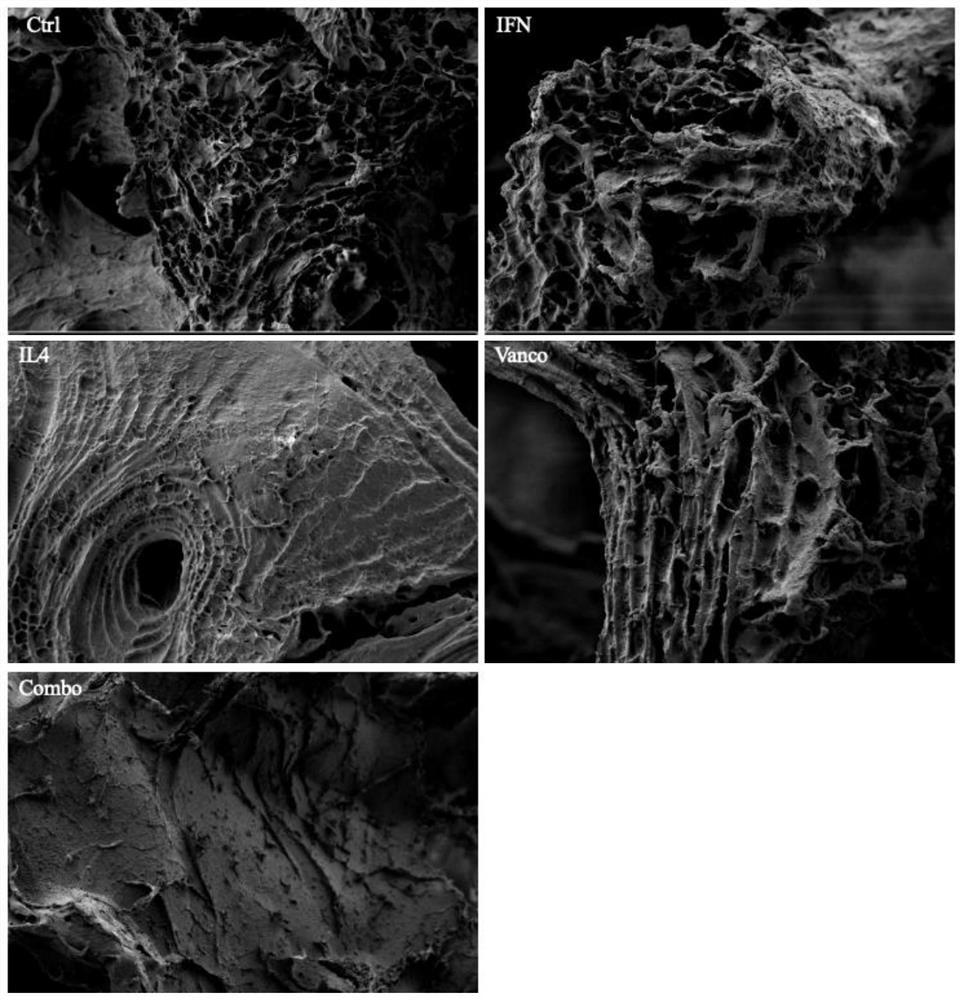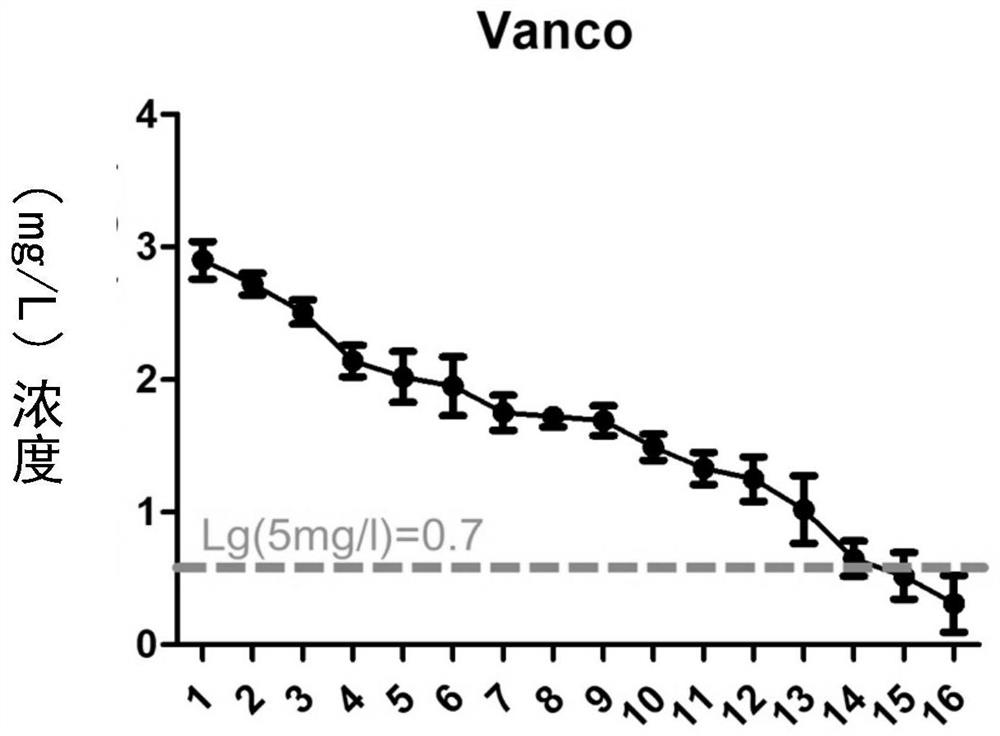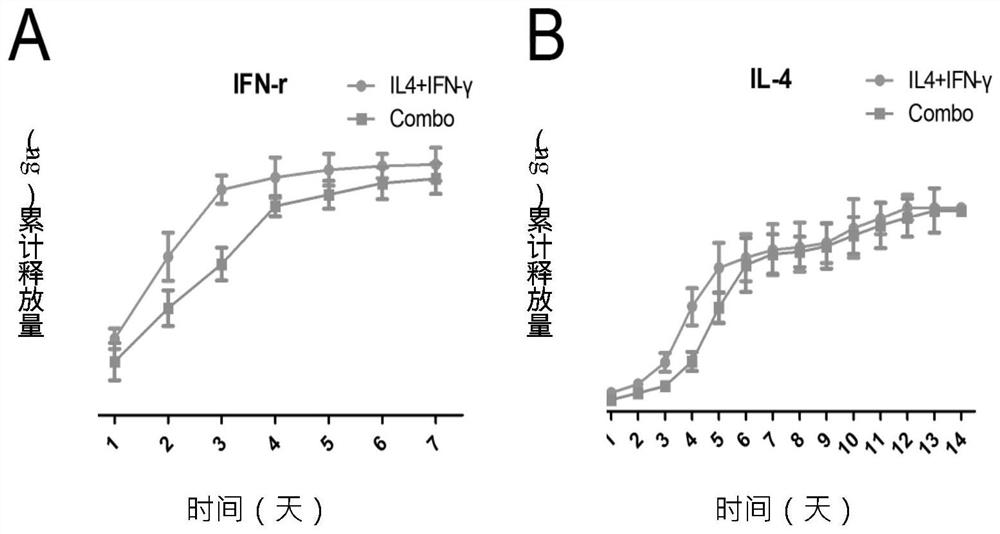Tissue-engineered bone scaffold for treating infectious large bone defects as well as preparation method and application of tissue-engineered bone scaffold
A tissue-engineered bone and infectious technology, which is applied in the field of tissue-engineered bone scaffolds and its preparation, can solve the problems of weakened recruitment effect, prolonged bone healing time, and failure of angiogenesis to achieve the effect of promoting angiogenesis and preventing infection
- Summary
- Abstract
- Description
- Claims
- Application Information
AI Technical Summary
Problems solved by technology
Method used
Image
Examples
Embodiment 1
[0036] Example 1 Decalcified bone matrix (decalcified bone matrix, DBM) material preparation and biotinylation
[0037] 1. Prepare the scaffold:
[0038] Relying on the bone bank of Southwest Hospital, the DBM scaffold was prepared from Yunnan Xiaoxiang pig tibia, proximal and distal cancellous bone of femur, and the size of the scaffold was about 3x3x3mm 3 . First decalcify the DBM, add 0.6M hydrochloric acid in a closed glass container, and put the DBM stent into it for soaking. Soak at room temperature for 24 hours, replace the hydrochloric acid once every 8 hours, when the cortical bone is translucent and flexible and elastic, the cancellous bone will automatically return to its original shape after being compressed in a spongy shape, take out the bone, rinse and soak repeatedly with sterile distilled water , until the pH value is 7, suck out the soaking solution, place the decalcified DBM scaffold material in a centrifuge tube, centrifuge at 300g for 5min, and irradiate...
Embodiment 2
[0045] Embodiment 2 Sustained-release kinetic detection
[0046]Put the second and third groups of composite materials in 10 ml of DMEM / F12 medium, place them in a 37°C incubator, change the liquid every day, and collect the medium, centrifuge at 10,000r / min for 10 minutes, and take the supernatant The vancomycin concentration was measured on a high-performance liquid chromatograph, and the release of IL-4 and IFN-γ was measured by ELISA.
Embodiment 3
[0047] Example 3 Effect of Composite Materials on Macrophage Polarization
[0048] Take the macrophages stimulated by M-CSF for 5 days, and use 1×10 6 The concentration per ml was inoculated to each group of materials by the double-sided static inoculation method, and the medium was added, and the medium was replaced after cultivating for 3 days. The medium was taken at 1, 4, and 7 days of culture, and the protein content was detected by ELISA. The materials of each group were collected at the same time point, and the mRNA was extracted after grinding with liquid nitrogen. After reverse transcription was performed according to the instructions of the Takara reverse transcription kit, Real-time PCR was performed. The primer sequences and the length of the amplified products are listed in Table 2. The amplification conditions were 95°C for 30s, [95°C for 5s (denaturation), 57°C for 20s (annealing), 72°C for 15s (extension)] x 40 cycles, 95°C for 30s, 57°C for 30s, 95°C for 30s...
PUM
| Property | Measurement | Unit |
|---|---|---|
| concentration | aaaaa | aaaaa |
Abstract
Description
Claims
Application Information
 Login to View More
Login to View More - R&D
- Intellectual Property
- Life Sciences
- Materials
- Tech Scout
- Unparalleled Data Quality
- Higher Quality Content
- 60% Fewer Hallucinations
Browse by: Latest US Patents, China's latest patents, Technical Efficacy Thesaurus, Application Domain, Technology Topic, Popular Technical Reports.
© 2025 PatSnap. All rights reserved.Legal|Privacy policy|Modern Slavery Act Transparency Statement|Sitemap|About US| Contact US: help@patsnap.com



